Updated December 16, 2024
According to Booking.com’s 2023 Sustainable Travel Report, 76% of respondents hope to embrace sustainable travel plans over the next year.
Table of Contents
- Sustainable travel products to help reduce waste
- 1. Reusable mask
- 2. Decent luggage with a solid warranty
- 3. Reusable water bottle
- 4. Collapsible reusable cup
- 5. Pocket shopping bag
- 6. Produce bags
- 7. Reusable bread bag
- 8. Reusable eating utensils
- 9. Reusable straw and cleaner
- 10. Four alternatives to Ziploc® bags
- 11. Dry bags
- 12. Reusable shoe bag
- 13. Reusable 3-1-1 toiletry bag
- 14. Reusable travel-sized containers
- 15. Soap, shampoo, and conditioner bars
- 16. Skip the plastic soap case
- 17. Lotion bar
- 18. Natural deodorant
- 19. Natural moisturizer
- 20. Bamboo toothbrush
- 21. Toothpowder or tablets
- 22. Biodegradable and refillable dental floss
- 23. Biodegradable floss pick
- 24. Biodegradable hair ties
- 25. Reef-friendly sunscreen
- 26. Alternatives to traditional cotton buds
- 27. Biodegradable wipes
- 28. Reusable tissues or handkerchief
- 29. Reusable facial rounds
- 30. Leakproof panties
- 31. Reusable menstrual pads
- 32. Reusable panty liners
- 33. Tree-free toilet paper
- 34. Tree-free tissues
- 35. Merino clothing
- 36. Merino shoes
- 37. Hiking wool
- 38. Travel clothesline
- 39. Laundry detergent eco-strips
- 40. Laundry wash bag
- 41. Bamboo travel towel
- 42. Silk sleep sack
- 43. Use tech gear to promote sustainability
- 44. Compostable phone case
- 45. Pack your own headphones
- 46. Choose rechargeable batteries
- 47. Refillable pen
- 48. Pack what you need for a comfortable flight
- 49. Natural chewing gum
- 50. Other tips on sustainable travel products and packing
- (i) Pack light
- (ii) Work with a packing list
- (iii) Pack well in advance
- (iv) Pack clothes that you already have and love to wear
- (v) Become a list shopper
- (vi) Invest in quality
- (vii) Leave your trash at home
- (viii) Assemble a small MacGyver kit for travel
- (ix) Buy secondhand
- (x) Pack just one book
- (xi) Insist on green practices
- (xii) Collect trash
- (xiii) Buy local
- (xiv) Expand your eco-friendly vocabulary
- (xv) Make small choices that matter
- (xvi) Spread the word
- (xvii) Take small steps to start
Sustainable travel products to help reduce waste
Travelling sustainably includes packing sustainable travel products in our luggage, being mindful of what’s used and discarded along the way, and how to make conscious efforts to respect the environment of places we visit.
Sustainable packing begins with assessing which items in our travel bags help protect the planet and which ones pollute it. It requires identifying companies that promote longevity in their products, use plant-based and biodegradable materials and packaging, and help us produce as little waste as possible. With the expansion of the green market in recent years, packing sustainably is easier than it’s been in decades. Let’s use our travel funds to foster further development of eco-friendly products and practices.
While the following suggestions on sustainable travel products won’t result in zero-waste travel, hopefully, they’ll encourage a more intentional approach to reducing waste and eliminating more single-use items.
1. Reusable mask
A mask may continue to be a necessary piece of kit for many years to come, and the earth cannot sustain the devastating impact of the environmental damage caused by disposable masks. Research by OceansAsia estimates that over 1.5 billion single-use face masks entered oceans in 2020, resulting in as much as 6,240 metric tons of marine plastic pollution.
Skip the disposable variety. There are many companies and Etsy sellers that have created a host of reusable face masks for non-medical use. For a top-of-the-line mask, check out Sonovia. The Sonomask Pro is rated as more effective than the N-95 mask. Tests conducted by Vismederi Textyle, a leading CE-approved laboratory, revealed that Sonovia’s fabrics eliminate Delta variant particles with over 99.95% effectiveness. It’s pricey but effective, and it’s the most comfortable mask I’ve ever worn.
2. Decent luggage with a solid warranty
One feature I appreciate in Osprey products is the ‘All Mighty Guarantee.’ This translates into a lifetime warranty where Osprey will repair any damage or defect free of charge. If the bag can’t be fixed, it’ll be replaced.
On my return to Canada from New Zealand, I tested Osprey’s All Mighty Guarantee. My Farpoint 40 had fallen off the back of a motorcycle, suffering a nasty case of road rash. I shipped my damaged pack to Osprey’s partner in Montreal and several weeks later received a brand-new bag. My old bag didn’t end up in a landfill. Recoverable parts of damaged and worn-out bags are used to make functional repairs to other bags. It’s a win for consumers and a win for the environment.
3. Reusable water bottle
A refillable water bottle is a no-brainer; it belongs on every packing list. The challenge lies in keeping it clean and choosing what works best given your travel plans and the ability of the water bottle to work with the rest of your gear. Does it need to fit in the cup holder of a vehicle or the side pocket of a backpack? If it needs to be clipped to a crossbody purse or day bag, does it need to have a loop, handle, reinforced grommet, or carabiner? Does it need to purify water in places where tap water may not be safe to drink?
An advantage of a foldable water bottle is that it takes up hardly any space when empty. It can be useful as a primary water bottle or as a secondary source of hydration when one water bottle isn’t enough. The Vapur Eclipse Flexible Water Bottle has a capacity of 1 litre / 34 fl oz and folds down to a compact package weighing 3.1 oz / 88 g when empty. An integrated carabiner allows attachment to a bag or belt loop. It also comes in a capacity of 0.7 l / 23.6 fl oz.
When choosing a rigid water bottle, some are too wide to fit in a vehicle’s cup holder. Others are too tall or too narrow to fit snugly in the side pocket of a daypack and tend to fall out.
When travelling to those parts of the world where the tap water isn’t drinkable, a reusable water bottle with a built-in water purifier/filter is an alternative option to plastic water bottles that aren’t likely to be recycled. I like the self-cleaning LARQ Bottle Movement PureVis that allows access to safe drinking water from any source… tap, puddles, lakes, or streams. It uses UV-C technology to bathe the inside of the bottle with UV light to clean the bottle and sterilize the contents.
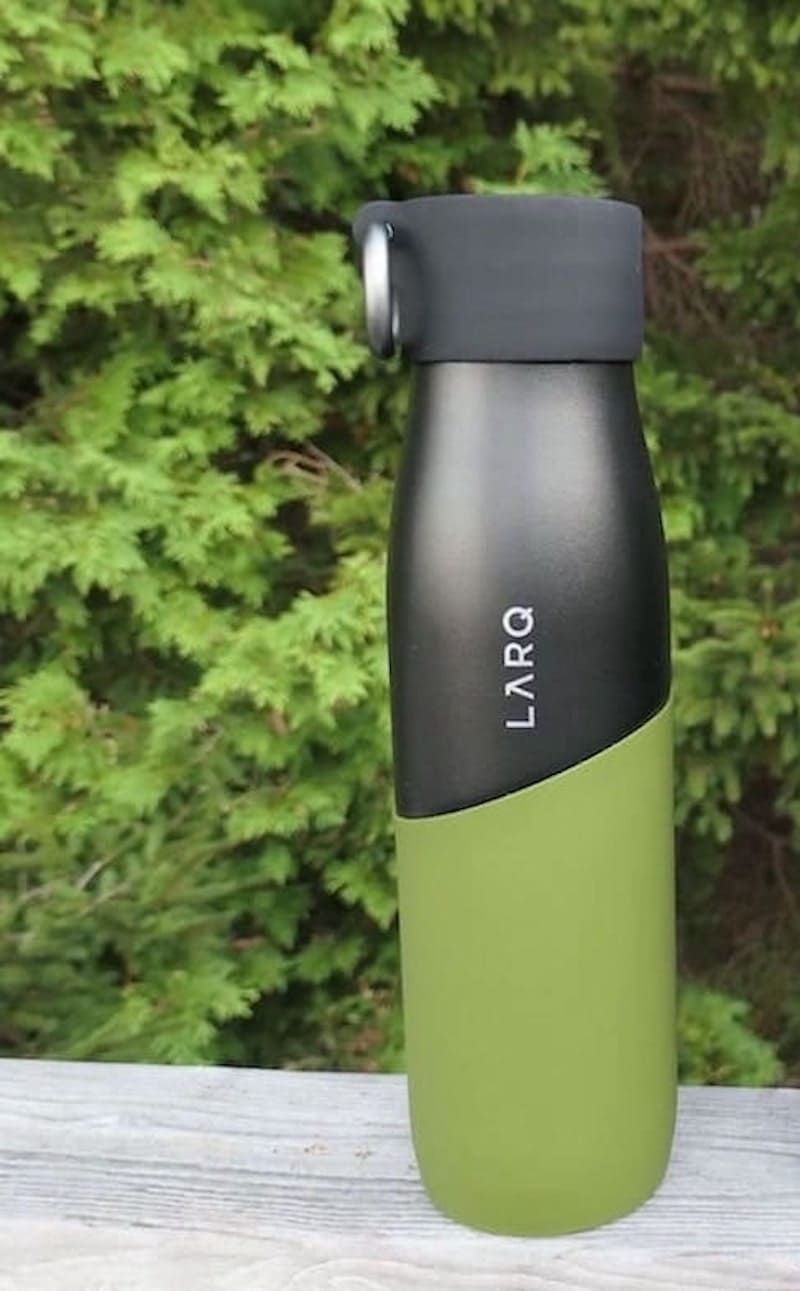
4. Collapsible reusable cup
If you love your daily tea or coffee, carry a collapsible, reusable cup. Or take a load off and enjoy it in a proper cup or mug while soaking up the atmosphere and complimentary Wi-Fi of a local coffee shop.
While advances are being made in recycling cups and lids, the vast majority end up as litter or in landfills and oceans. And it may be some time before the edible or compostable variety becomes commonplace.
Mine is a Stojo Pocket Cup with a capacity of 12 oz / 355 ml. Expanded, it’s 5 in / 12 cm tall, 2 in / 5 cm collapsed, and weighs 150 g / 5 oz. (The 24 oz / 710 ml size comes with a straw.) It’s more portable than a non-collapsible cup and easy to collapse and bring to the extended position. The lid is secure and leakproof. It’s constructed of food-grade silicone, with a BPA-free lid and heat sleeve. It’s microwave and dishwasher safe. I find it retains the coffee aroma, so it’s best kept for the intended use (e.g., as a coffee or tea or soup cup).
5. Pocket shopping bag
Find a permanent place in your day bag for a reusable pocket shopping bag. I’ve found in the past that if it’s not in my day bag, chances are I’ll need to pay for a reusable shopping bag or end up with a plastic bag (where they’re still available). My machine washable ChicoBag rePETe is made from recycled post-consumer plastic bottles and other recycled components for its carabiner, cording, and cord lock.
The bag folds into its own little sack, and its lightweight carabiner can clip to a purse or belt loop. It’s rated to carry 11 kg (25 lb). I’ve had it for years, and it has earned its rightful place as one of my travel essentials.
6. Produce bags
Buying fresh, local food in markets invariably results in less waste and fewer emissions associated with transportation over long distances. Chances are there won’t be any annoying stickers that need to be removed prior to composting. It’s also an opportunity to interact with the producers of the food, eliminate the ‘middlemen’ in between, and keep travel funds in communities we love to support.
Shopping at local markets is easier with a few reusable, lightweight mesh produce bags and a pocket shopping bag. In grocery stores, they’ll help you refuse produce wrapped in Styrofoam or plastic and skip plastic produce bags. They weigh next to nothing, consume very little space, and double as a strainer when washing fruit and vegetables.
Mine came as a pack of 12 containing three different sizes. When I pack a set of three bags (large, medium, and small), the combined weight is only 64 g / 2.3 oz.
7. Reusable bread bag
For travels that involve housesitting or staying in self-contained accommodation, a reusable bread bag is handy. It helps avoid plastic bags, paper packaging, twist ties, and plastic bread clips when purchasing bread from a bakery, farmers’ market, and certain grocery stores.
8. Reusable eating utensils
Refuse disposable cutlery. When ordering takeout, ask that none be placed in the bag. Carry your own chopsticks, cutlery, spork, or wallet-sized flatware. They’ll help you avoid the disposable stuff or utensils where the cleanliness is suspect.
I’m a fan of the Gosun stainless steel flatware. When not in use, it collapses to fit in a wallet-sized case.
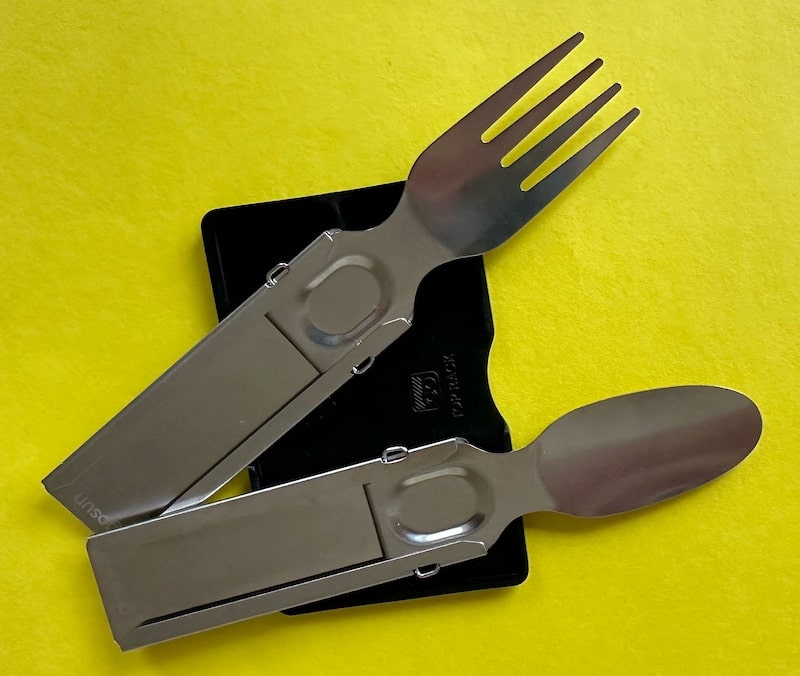
Sea to Summit produces a collapsible plate and bowl. The X-Plate has a rigid cut-resistant base and weighs 4.9 oz / 140 g. The X-Bowl weighs 2.8 oz / 80 g. Both are made of food-grade silicone.
Or perhaps a collapsible set of containers with a leakproof lid is a better fit for your ability to prepare and pack snacks and meals in advance or bring leftovers from eating out in restaurants. Thin Bins come in a set of four, each with a snap-on lid that creates an airtight vacuum seal.
9. Reusable straw and cleaner
Plastic straws suck. According to National Geographic, US residents use 500 million straws every day. Some suggest that straws are unnecessary, that we use them out of habit, or because a drink comes with one.
However, some people use straws as a matter of hygiene to avoid contact with the rim of a cup, can, or bottle. Others prefer that their teeth not come in contact with the liquid because they’re sensitive or susceptible to staining. For some people with physical disabilities, straws play an essential role in helping them eat and drink. For others, it’s a matter of convenience to avoid reapplying lipstick. If you’re a ‘straw person’ or expect to drink from a coconut, there are reusable metal, glass, or bamboo options. A telescopic version, with a collapsible cleaning brush, comes in a small carrying case that packs easily in a day bag.
When ordering a drink, add “no straw, please” as a matter of habit. Make it as common as ordering a drink without ice where the water quality is suspect.
10. Four alternatives to Ziploc® bags
Ziploc® bags are so handy that it’s hard to give them up. Thankfully, there are many viable alternatives.
There are lots of reusable zip-top bags on the market. I’ve used E-Z Seal Extra Thick Reusable Storage Bags. They’re washable, leakproof, and safe for storing food. Use them as sandwich bags or for supplements, trail mix, pastries, fruit, or leftovers. Wash them out, and they dry overnight. Or use them as packing organizers for smaller items that are difficult to find when allowed to roam free in a bag.
One with a pre-moistened tablet towel (See #27 below) has a permanent place in my daypack and in-flight personal bag. Stasher is a popular choice, but the one I bought was much more expensive and is four times heavier than an E-Z Seal bag of a similar size.
Beeswax clings easily to a bowl, sandwich, or opened roll of Tums. It’s a sustainable alternative to plastic cling wrap and Ziploc® bags because it’s made of natural ingredients and is compostable and biodegradable. A pack of a few different sizes offers alternatives to single-use plastic.
There are many sellers on Etsy who make pouches to serve a host of packing needs. Cloth pouches with an easy-to-clean water-resistant inside liner are ideal for storing snacks and sandwiches. Or ChicoBag makes a reusable snack bag of rePETe fabric made entirely from recycled plastic bottles.
Reusable packing organizers (folders, cubes, envelopes, compression sacs, and a host of others) help organize, protect, and compress (in some cases). They’re functional and reusable and help wean us off plastic bags with a limited life span.
11. Dry bags
Dry bags keep moisture out and keep stuff dry. But they can also keep moisture in and protect surrounding items. There’s no need to wrap damp or dirty shoes in plastic; use a dry bag. If a swimsuit or travel towel hasn’t had a chance to dry on a travel day, pack it in a dry bag. A dry bag works well as a dirty laundry hamper to lock in the skunk of soiled clothing.
12. Reusable shoe bag
A popular packing tip seen on the internet is to use a shower cap or plastic grocery bag as a shoe bag. Both options are flimsy, of limited use, and far from sustainable. Instead, use a washable cloth bag for clean footwear and a dry bag for damp, dirty shoes. A dry bag seals in the dampness and odour, cleans easily, and is reusable.
13. Reusable 3-1-1 toiletry bag
A 3-1-1 bag is the term used in some countries to describe the container needed to bring liquids, aerosols, gels, creams, and pastes in the cabin of aircraft.
For this purpose, some airports offer zip-top bags at security checkpoints. They’re flimsy and incapable of coping with the rigours of travel. They suffer wear and tear and eventually need to be discarded. A durable, reusable, and washable 3-1-1 bag is easier on the planet.
There are several on the market. Mine is a Tom Bihn 3D Organizer Cube. When searching for a reusable 3-1-1 bag, look for one with a built-in swivel hook to hang on a towel rack, shower curtain rod, tree branch, hook, or bed frame.
14. Reusable travel-sized containers
Restrictions on quantities of liquids, aerosols, gels, creams, and pastes contribute to plastic pollution. Millions of people buy travel-sized toiletries and discard the containers after use. Others rely on using hotel toiletries in travel-sized containers.
My suggestion? Only buy travel-sized containers of hand sanitizer, lotion, or shampoo if you plan to refill them with your favourite products. An advantage of off-the-shelf travel-sized toiletries is that the containers are usually functional and leakproof. They’re designed to work with the products inside. This means that under normal conditions, the lid doesn’t stick, the nozzle doesn’t clog, and the lid provides a leakproof seal.
Another advantage is that the manufacturer’s label clearly distinguishes the contents and saves making a label for products that look the same.
Or repurpose discarded containers such as prescription bottles, contact lens cases, and anything else having potential. Or invest in small, durable containers of various sizes and functions. Each one needs to be less than 100 ml / 3.4 oz for carry-on travel.
Then, decant from larger containers before leaving home. This is especially important for travellers with sensitivities and special needs or those loyal to specific products. You’ll
- save money because they’re easy to refill and reuse, and you’re filling them with products you already have
- use the contents with confidence because you’re using tried-and-true products from home
- not waste valuable travel time searching for products that meet your needs.
Keep in mind that toiletries have expiry and best-before dates, so build this into your purchasing and packing habits.
15. Soap, shampoo, and conditioner bars
There are several compelling reasons to choose solid over liquid products.
- As solids, they circumvent the restrictions on liquids, aerosols, gels, creams, and pastes. This frees up space in a 3-1-1 bag.
- There are no leakages that can cause serious (and expensive) damage.
- Solids are usually lighter than their liquid counterparts.
- They last longer. There’s less likelihood of using more than is needed.
- Sometimes it’s difficult to squeeze the last of the liquid from a bottle of shampoo or conditioner. Solids can be used until the last swipe or combined with a fresh bar.
- Many are sold naked or packed in compostable paper. This helps decrease the amount of plastic waste typically associated with beauty products.
- Many are made of natural ingredients. Harsh chemicals aren’t being introduced into the environment, making them ideal for camping and places without effective wastewater systems.
Check out what’s available at local markets. If you’re purchasing online and looking for recommendations, one of my favourite all-purpose soap bars is Dr Bronner’s 18-in-one Hemp Pure Castile Soap (in lavender). It’s multipurpose and environmentally friendly, with no synthetic preservatives, fragrances, thickeners, or foaming agents. It can be used as body wash, face wash, shampoo, laundry soap, dish soap, or shaving cream. It lathers beautifully.
In shampoo bars, my preferences are Éthique (Sweet & Spicy Volumizing), etee (Lavender/Chamomile), J.R. Liggett’s (Original Formula), and Nature’s Aid (Moisturizing Mango and Tangerine).
LUSH is a popular choice. I loved the shampoo bar Honey I washed my Hair but discontinued use when I realized it contained SLS (Sodium Lauryl Sulfate) and other synthetic chemicals. For an in-depth article on LUSH, see How Ethical Is Lush Cosmetics. Holly Rose Investigates.
When my hairdresser suggested my hair could benefit from not shampooing it every day, I switched to doing so every few days, depending on the climate and my level of activity. This practice has certainly extended the life of my shampoo and reduced the amount of water used when showering.
16. Skip the plastic soap case
While not a single-use product, a plastic soap bar case may not be the best choice for those who travel with a soap, shampoo, or conditioner bar.
Check out the remarkable Matador FlatPack Soap Bar Case. It functions as a dry bag to keep moisture inside. Slip a wet bar inside, and it miraculously dries out within a few hours. An added advantage is that as the solid bar decreases in size, the soft-sided case does the same and takes up less space.
Another option is a lightweight tin. LUSH has square, oval, and circular containers; the circular tin from Nature’s Aid fits all their circular shampoo and conditioner bars. However, I prefer small wet-bag pouches made with PUL fabric (Polyurethane Laminate). Mine are from the online marketplace, Etsy.
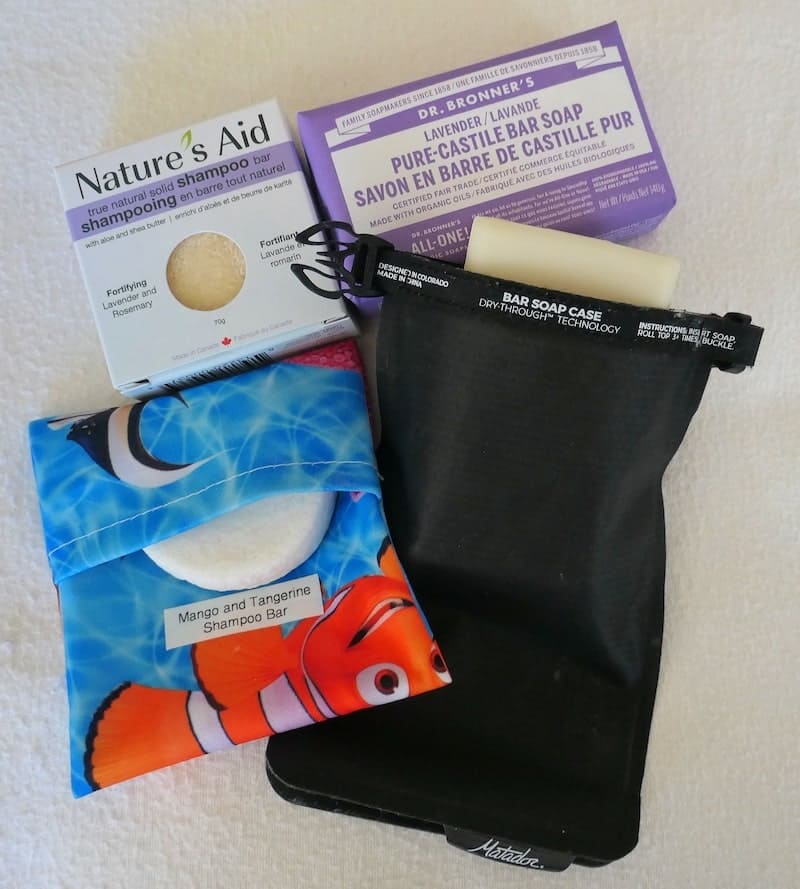
17. Lotion bar
Look for lotion in plastic-free containers. As with other solid products, lotion bars offer many advantages. My favourite to date is the ClimbOn Lotion Bar(Cedar). It’s in a compostable paper tube and contains 100% natural ingredients from plants and beeswax. It works best as a hand lotion and on dry spots such as elbows and feet, but also soothes burns, rashes, and stings.
18. Natural deodorant
Crystal deodorant isn’t for everyone, but it works for me. Some people suggest a trial period to give the body a chance to adjust. Crystal takes up very little space and isn’t affected by airline restrictions on liquids, aerosols, gels, and powders. Just wet the top before each use, and it lasts for many months of daily use.
For an all-natural cream product, I like No Pong Original in a 35 g / 1.2 oz recyclable tin. Its ingredients are Coconut Oil, Baking Soda, Corn Starch, Beeswax, and a proprietary blend of 100% pure, Canadian-certified organic essential oils. Produced in both Australia and Canada, No Pong deodorant applies easily and is very effective.
19. Natural moisturizer
Aloe vera is a natural moisturizer, rejuvenating and rebuilding healthy tissue to improve texture and elasticity. Hence the skin is firmer and more radiant. This multipurpose product naturally penetrates deep within the skin, promoting the healing of sores, cuts, rashes, bruises, frostbite, insect bites, and athlete’s foot. It’s also a natural makeup remover and shaving cream.
Look for a clear aloe vera product with high aloe vera content, few safe preservatives, and no alcohol, fragrances, or colouring.
20. Bamboo toothbrush
One estimate is that around 3.5 billion toothbrushes are sold worldwide each year. The American Dental Association recommends getting a new toothbrush every three to four months. Over a lifetime, that’s a lot of discarded plastic.
Consider switching to a biodegradable bamboo alternative. Bamboo is a highly sustainable material. It’s abundant, grows quickly, and requires very little water and no fertilizer or pesticides. Less energy is used in its production, resulting in a much lower ecological footprint than plastic.
21. Toothpowder or tablets
One problem with toothpaste is that it’s tubed in plastic. In the interests of packing light, I used to stock up on 18-ml travel-sized tubes that barely lasted 40 brushings.
It took experimenting with tooth powders and tablets to arrive at my current and affordable favourite: GloBoid Toothpaste Tablets with Fluoride. One tablet foams beautifully and my teeth feel clean after each brushing.
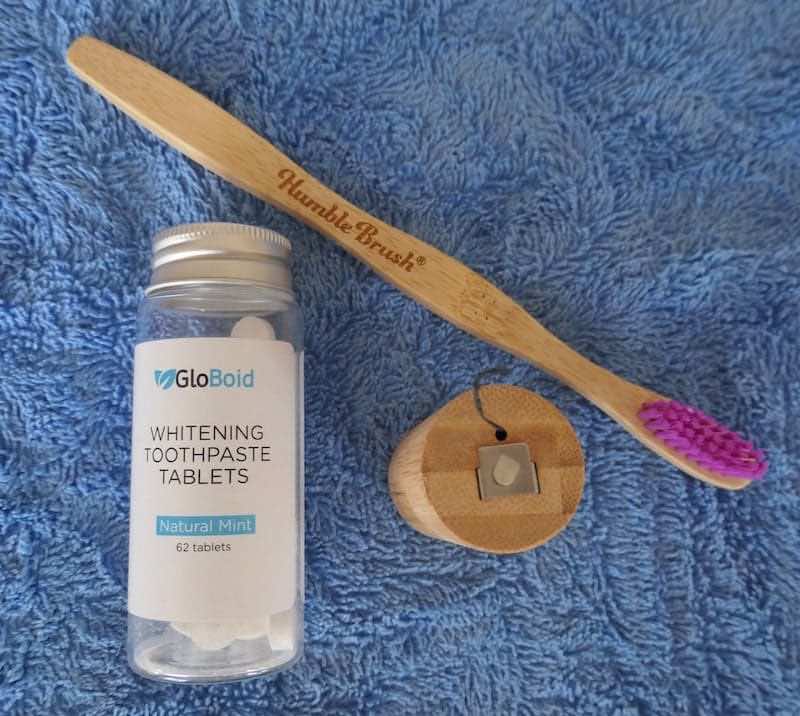
22. Biodegradable and refillable dental floss
Refillable dental floss containers are made of bamboo, glass, or stainless steel. Dental Lace has its compostable mulberry silk dental floss in a refillable and recyclable travel-friendly glass container. I love the compact size of the Dental Lace container, but I find the silk floss tends to shred and break without too much effort. Bamboo charcoal floss is much stronger and more durable.
23. Biodegradable floss pick
Interdental picks are effective for removing unwanted debris between teeth. Unfortunately, most are made of plastic and designed for single use. For a biodegradable alternative, there are several on the market. Handles tend to be made of cornstarch or other plant-based materials, and floss of bamboo, mulberry, or nylon. I use the EcoFlosser from Clean Idea. The nylon thread is shred-resistant, and the ergonomically designed handle permits access to hard-to-reach areas. It’s surprisingly strong and highly durable. In fact, I carry a small supply and reuse them. They rinse well in water and can be easily sterilized using a denture-cleansing tablet.
24. Biodegradable hair ties
The Canadian company Kooshoo makes a biodegradable plastic-free hair elastic made of organic cotton and natural rubber.
25. Reef-friendly sunscreen
Most off-the-shelf sunscreen products contain ingredients that contribute to the destruction of coral reefs.
Unless you’re purchasing sunscreen in a jurisdiction where ‘reef-friendly’ is regulated, it’s important to read the label for reef-harming ingredients such as oxybenzone, octocrylene, parabens, and triclosan. Also, look for ‘non-nano’ as this means that there are no nano-size particles that can be ingested by corals and disrupt the marine ecosystem.
One of the attractive features of All Good SPF 50 Zinc Sunscreen Butter is that it contains only six ingredients (25% Zinc Oxide, Organic Coconut Oil, Organic Beeswax, Organic Calendula Flowers infused with Organic Jojoba Oil, and Vitamin E). It comes in a handy 28 g / 1 oz biodegradable can.
26. Alternatives to traditional cotton buds
LastSwab is a reusable, sustainable, and sanitary alternative to cotton swabs, buds, and Q-Tips. The rigid nylon core has a medical-grade silicone bud at each end that’s easily cleaned with soap and water. The swab is housed in a corn-based storage case and is tested to manage 1,000 uses.
If you’re hooked on traditional single-use cotton buds, choose ones with paper stems instead of plastic. Organyc uses organic cotton in their buds and cotton balls.
27. Biodegradable wipes
Tablet towels can be an effective alternative to wipes. The compressed fibre towels are small, lightweight, and compact, with a diameter of 2 cm / 0.75 in and a depth of half that. Look for ones made of bamboo; they’re more sustainable than those from wood pulp. When introduced to a little water, they explode into a compostable, durable washcloth. Carry a pre-moistened towel in a reusable zip-top silicone bag, and several dry towels in the event they’re needed to wipe down a wet surface, clean up spills, or use as a handkerchief or emergency toilet paper.
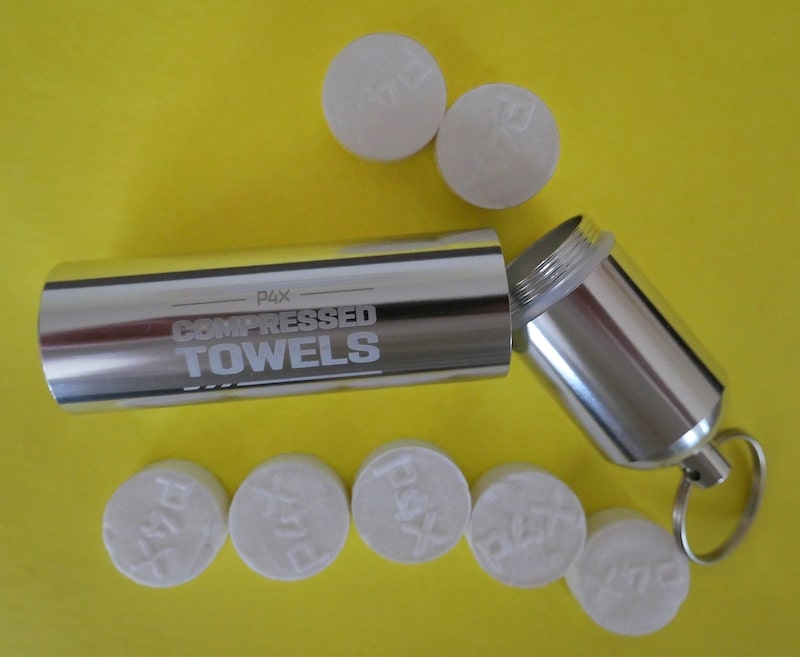
28. Reusable tissues or handkerchief
A handkerchief or reusable tissue is one of those multipurpose items that’s an eco-friendly alternative to wipes and paper tissues.
The paper-and-pulp industry is the third-largest industrial emitter of global warming gasses. In the United States alone, around 8,000,000 trees are cut each year to make facial tissues. The removal of trees leads to a loss of wildlife habitat by reducing available food and shelter. It also removes the effect the trees have of cleaning carbon emissions, producing breathable oxygen, and slowing the pace of climate change.
Thanks to Kleenex, cloth handkerchiefs have all but disappeared from everyday life. They’re still available, and at thrift shops, you might be fortunate to find some fancy hand-embroidered ones with a long history.
LastObject (the company that produces LastSwab) makes LastTissue, a set of six reusable tissues made of 100% organic cotton and stored in a durable travel-friendly silicone case. Clean tissues are separated from used tissues by a silicone barrier. According to the company, the tissues can be washed up to 520 times each at 140°F (60°C).
29. Reusable facial rounds
For a makeup routine that involves disposable facial wipes, there are reusable options made of organic cotton or bamboo.
Reusable makeup remover pads are an eco-friendly alternative to the disposable varieties. Greenzla rounds are crafted from bamboo, cotton, and polyester. Both sides of each pad can be used for applying toner or removing makeup, and they’re soft, absorbent, and gentle on all skin types. The kit of 20 rounds includes a mesh bag for machine washing (or they can be handwashed while travelling).
30. Leakproof panties
Leakproof panties can be a game-changer for those who menstruate, perspire profusely, or experience urine leakage or vaginal discharge. Commercially produced menstrual products such as tampons, pads, and associated packaging generate a lot of waste. According to Friends of the Earth, a person who menstruates is predicted to discard roughly 400 pounds (181 kilograms) of these products during their lifetime. The Canadian company Ellza claims that 12 billion pads and 7 million tampons are discarded annually, and that a sanitary pad takes 450 years to decompose.
Leakproof panties offer one way to reduce our environmental footprint and make travel more accessible for those who require leakproof underwear. My Knix Super Leakproof Bikini hold up to 8 teaspoons of liquid, the equivalent of eight regular tampons. They’re comfortable, invisible under clothing, and provide me with the confidence to deal with light bladder leaks. My Ellza Leakproof Elegance panties are just as comfortable, and absorb the equivalent of four pads. At the back, the leakproof lining extends all the way to the elasticized band.
31. Reusable menstrual pads
Friends of the Earth reports that conventional sanitary pads contain up to ninety per cent plastic. According to the Marine Conservation Society, much of this waste ends up in our oceans. The organization reports that, on average, 4.8 pieces of menstrual waste are uncovered on each 100-metre stretch of beach clean-ups. This amounts to four pads, panty liners, backing strips, and at least one tampon and applicator.
Making the switch to a reusable menstrual product is made easier with the Trade to Aid reusable sanitary pads. The organization is committed to ending period poverty around the globe. For each purchase, a pack is donated to someone in need, and profits are diverted to menstrual education programs in West Africa that help keep girls in school and women in the workforce. Each pack of reusable sanitary pads contains two light-flow pads, two medium-flow pads, two heavy-flow pads, and one waterproof wet bag.
32. Reusable panty liners
Panty liners have many advantages, including feeling fresh during long travel days, and protection from urine leakage, vaginal discharge, and menstrual-related issues. These situations, and more, are of concern to travellers.
There are commercial varieties, some of which are oozing in plastic, but thankfully, there are alternatives. My washable panty liners made of organic cotton are not only comfortable, but they remain in place with their snap closure, unlike some commercial products with an adhesive backing. There are plenty of sellers on Etsy; I chose Lily Pads Reusable Products.
If single-use panty liners are preferred, natracare and Organyc offer a better choice than many commercial products. Their biodegradable and compostable organic cotton liners are plastic-free and packed in a cardboard carton. If you’re looking for a travel-friendly reusable pouch to protect panty liners, place a made-to-order request on Etsy.
33. Tree-free toilet paper
Prepare a DIY pack of emergency toilet paper for those occasions when toilet paper isn’t available. There are lots of brands that use bamboo in their products, a highly sustainable ingredient that decomposes faster than paper. I chose three-ply Silk ‘n Soft from True Earth; it’s absorbent and durable, and safe for septic and RV systems.
34. Tree-free tissues
It’s pleasing to see more bamboo products on the market, including travel packs of bamboo tissues. When using them as emergency toilet paper, place them in the bin provided. They don’t dissolve as well as toilet paper and can wreak havoc on a system.
35. Merino clothing
Polyester, nylon, acrylic, and other synthetic fibres — all of which are forms of plastic — now make up about 60 per cent of the material used in clothing worldwide. When these fabrics are laundered, tiny microfibres are released in varying degrees depending on the fabric. It’s estimated that 35% of microplastics in the marine environment are fibres from synthetic clothing. Choosing natural fibres over synthetics can make a significant and necessary difference in protecting our waterways and oceans. Merino wool is an all-natural sustainable product harvested from merino sheep. Because wool biodegrades in marine environments, it doesn’t contribute to microplastic pollution. Its other attributes make it a popular choice for packing light travellers.
- It’s cool in warm weather and warm in cool weather.
- Merino is soft and doesn’t itch like other woollen garments.
- It’s lightweight and doesn’t demand a lot of space.
- Merino clothing is perfect for layering up and down. When the temperature drops, wear an extra layer. When it warms up during the day, remove a layer and stuff it into a day bag.
- It’s easy to assemble a few base layers and a couple of mid-layers that work well together in a capsule wardrobe.
- It dries quickly.
- Its odour-resistant properties are legendary. For example, the same pair of merino socks can be worn for several days without washing, so there’s never a need to pack more than two pairs. The same holds for base-layer shirts that can be worn several times without washing. This translates into packing less and clothes last longer because of fewer washes.
36. Merino shoes
The company Allbirds makes merino shoes in a range of styles and colours. My Allbirds Wool Runners are lightweight and comfortable, pack well, and my choice of the solid dark grey colour blends nicely with a capsule wardrobe. Besides the key ingredient of all-natural, sustainable merino wool, recycled plastic bottles are used in laces, and castor bean oil increases the natural content of insoles. Packaging comes from 90% recycled cardboard. It’s possible to wash them on a delicate cycle, then air dry. The company’s 30-day no-questions-asked exchange/return policy is hard to beat.
37. Hiking wool
It was on the third day of hiking New Zealand’s Banks Track that another hiker introduced me to hiking wool. She showed me how to wrap the all-natural merino product around and between toes and over other sensitive areas. It reduced the chafing and soreness I’d experienced on previous days and it has earned a permanent place in my blister-prevention toolkit.
38. Travel clothesline
A travel clothesline encourages regular hand washing, a more sustainable choice than washing (and drying) by machine. It also promotes packing light. Travel clotheslines are lightweight and take up very little space. My favourite type is braided, with hooks at both ends to loop back into the clothesline when attached to fixed objects. My Design Go Go clothesline comes with suction cups that I don’t find useful. Socks or panties can be slipped inside one of the braids so clothespins aren’t needed. Other laundry can be hung over the line or a couple of the braids used to advantage.
When staying in hostels, I ask for a lower bunk where it’s easy to set up a travel clothesline. If there isn’t a privacy curtain, my travel clothesline is pressed into service to create one, with my pashmina and laundry to create a privacy screen.
39. Laundry detergent eco-strips
If you expect to use a washing machine during your travels, an eco-strip might fit the bill. Eco-strips are lightweight, compact, and very easy to pack. If you choose a slightly scented variety, they’ll keep your packed luggage smelling fresh. Tru Earth laundry strips are a concentrated eco-friendly detergent, minus the water. A single strip weighs just 3 g / 0.1 oz but packs the same punch as 40 g / 1.4 oz of liquid or powdered detergent.
40. Laundry wash bag
Small and delicate items will last longer if they’re washed in a laundry bag. LastObject’s laundry bag is made of 100% organic cotton. The company claims the bag can be washed 500 times or more at 60 degrees (Celsius, or 140 Fahrenheit). The bag is perfect for washing reusable tissues, handkerchiefs, panty liners, and facial rounds.
41. Bamboo travel towel
Forget the highly recommended microfibre travel towels. They’re made of 100% plastic. During washing, they shred microplastics that are too small to be filtered out by waste treatment plants, so they end up in our waterways and oceans where they destroy marine animals and the environment.
There are more sustainable alternatives. Check out the Pangea Bamboo Towel. I bought my pocket towel through a Kickstarter project and it has served me well when staying in hostels. I’ve tried microfibre towels, but they come a distant second when considering weight, space, absorbency, comfort, and ease of use. The Pangea is naturally antibacterial, biodegradable, absorbs three times more water and dries two times faster than a microfibre towel.
The company ties purchases to beach and river cleanups. Every towel purchase results in the collection of 2 lb / 0.9 kg of trash.
42. Silk sleep sack
A silk sleep sack works as a sleeping bag liner, a natural cocoon of bedding when the cleanliness of sleeping accommodation might be questionable. Silk is one of the most sustainable fibres; it’s renewable, biodegradable, and uses less water and energy during manufacturing than many other fibres. Mulberry silk is the highest quality silk on the market. Not only is silk sustainable, but it’s lightweight, breathable, packable, compact, and quick-drying — perfect features for hikers and carry-on travellers. It offers a measure of warmth in cold conditions or relief when it’s warm.
In 42 degrees (Celsius) in Morocco (as in 107.6 degrees Fahrenheit), my silk sleep sack protected me from biting insects yet offered a cool covering. After much research, I purchased my silk sleep sack in 2013 from the family-owned New Zealand company Silk Living, producers of the Silksak. The YHA version has an insert that acts as a pillowcase and weighs just 108 g / 3.8 oz.
43. Use tech gear to promote sustainability
Tech gear is far from sustainable, but smartphones and tablets can be used to lighten the load and eliminate or reduce our reliance on eco-unfriendly gear and products.
When searching for charging cables, lighten your load by choosing a minimalist cable with several attachments. The inCharge X is a 6-in-1 charging cable that’s small enough to carry in a pocket or attach to a keyring.
For example, there are many applications (apps) that can help reduce reliance on paper products. Google Maps is more versatile than a physical map and provides real-time information on public transportation routes and schedules. A word-processing app such as MS Word can replace a journal, and apps such as Overdrive and Kindle used for audiobooks and digital books. Store tickets and itineraries in an itinerary management app (I like Kayak ‘Trips’) and use other apps to, for example, replace a physical compass, flashlight, or calculator.
- inCharge X keyring charging cable review of a tech favourite
- How to find affordable audiobooks
- My favourite itinerary management app
44. Compostable phone case
The Canadian company Pela makes a range of compostable tech accessories such as cases for phones and tablets, pockets to attach to phone cases, phone grips, and Smartwatch and Fitbit bands. They also make sunglasses. Thanks to flax straw and plant‑based biopolymer materials, the products can be tossed in a backyard compost.
45. Pack your own headphones
The cheap earbuds distributed by airlines are of such poor quality that they’ll inevitably end up in the trash. Besides, they’re packaged in a plastic bag and many airlines charge for them.
Pack your own. I prefer in-ear headphones. They take up less space than on-ear and over-the-ear headphones, and I’ve found two Bose brands comfortable for sleeping. Unfortunately, Bose no longer makes the SoundTrue Ultra, but the SoundSport are almost as good. Their noise-cancelling cousins, Bose QuietComfort 20, are my go-to favourites for long flights.
46. Choose rechargeable batteries
Rechargeable batteries are better for the environment because they can be used many more times than the typical non-rechargeable, throw-away types. But this is only if they’re used to their full potential. According to Yale Climate Connections, if a battery is recharged 50 times, its overall benefit to the environment is significant. It also means taking advantage of recycling centres. Unfortunately, many disposable batteries end up in landfills. The Sierra Club estimates that around 5 billion disposable batteries are sold in the United States every year, but less than 10 percent are recycled.
Where you have a choice, choose travel products such as digital cameras, electric toothbrushes, and flashlights with rechargeable batteries. After cell phones, flashlights are one of the biggest consumers of battery energy. A small, lightweight, rechargeable LED flashlight is indispensable for navigating at night, finding something in the dark, or checking dark corners for missing items. Sure, phones have flashlight apps, but sometimes a flashlight is the better option. I like the compact size of the Olight I1R2 Pro 180 Lumens Rechargeable EDC Key Chain Flashlight.
47. Refillable pen
A pen is a travel essential for signing or completing documents. Some authorities require that blue or black ink be used. Refillable fountain pens aren’t practical for travel, and many ballpoint pens aren’t refillable. Pilot makes a refillable product from recycled bottles. The B2P (Bottles to Pen) product is retractable, comfortable to hold, writes smoothly, and doesn’t clog or leak.
48. Pack what you need for a comfortable flight
It’s unlikely that the plastic packaging on blankets and pillows distributed on planes gets recycled. To deal with fluctuations in temperature, pack a light shawl or pashmina, and a light sweater. Leave the blanket and pillow in their plastic packaging and use one as a cushion for back support. Another option is to pack a pillowcase cover and stuff it with the plastic-covered item or clothing. My pillowcase cover from Etsy seller ellebee tree works for me.
49. Natural chewing gum
Many brands of chewing gum use polymers, synthetic plastics that don’t biodegrade. Improperly discarded gum litters streets and sidewalks, or makes its way into waterways, collecting toxins along the way. If you chew gum to deal with fluctuations in air pressure during a flight, pack a natural, biodegradable variety. There are a few on the market, including Glee and Chicza. For use as a breath freshener, consider switching to mints.
50. Other tips on sustainable travel products and packing
(i) Pack light
It will save on baggage fees, reduce emissions, lessen the chance of damage and loss, and increase your ability to walk or use public transportation. Packing light is better for you and the planet. According to Sustainable Travel International, lightening your luggage by 15 pounds (7 kilograms) decreases your emissions by about 80 pounds (36 kilograms) on a ten-hour flight. If 200 passengers on a plane all packed light, it could eliminate 16,000 pounds (7257 kilograms) of CO2.
In another example, Finnair calculated that if each passenger shaved 5 kilograms from their luggage, the total reduction, based on the airline’s traffic, could save almost 17,000 tons of CO2 emissions — the equivalent of 400 round trip flights from Helsinki to Paris.
(ii) Work with a packing list
A packing list helps avoid overpacking. It also lessens the chance of leaving something behind and needing to purchase a duplicate of what’s already owned.
(iii) Pack well in advance
Packing with time to spare offers a comfortable window to evaluate how sustainable, reusable, and wasteful each packed item may be.
(iv) Pack clothes that you already have and love to wear
Consider assembling a ‘travel wardrobe’ and set it aside for travel. It certainly makes for an easier packing experience when you can reach for tried-and-true pieces that mix and match well with each other.
The same applies to other possessions. Use what you have. There’s no need, for example, to buy a wooden comb when your lightweight plastic one has served you well, cleans easily, takes up very little space, and has several years of life left in it.
(v) Become a list shopper
If you need to buy travel gear, add it to a shopping list. Chances are you’ll be able to take advantage of sales such as Earth Day and Cyber Monday. The other advantage is items can be combined and shipped together. This decreases the carbon footprint per ordered and shipped product. It results in fewer transport emissions and less packaging.
(vi) Invest in quality
Seek out high-quality, sturdy gear that won’t need to be replaced on a longer trip. Then, look after it. Depending on a ‘buy-it-there’ approach to packing can result in a quick purchase of a cheap poncho, umbrella, or clothing that are easy on the purse but hard on the environment. The same applies to flip-flops, a major source of pollution. From footwear to backpacks to travel clothes, look for things that will last.
(vii) Leave your trash at home
Ignore packing tips that suggest taking old underwear and other clothing pieces and discarding when they’ve outlived their usefulness. Repurpose, reuse, or recycle these items at home. Otherwise, they will probably end up as garbage at your destination because you’re unfamiliar with recycling practices or they don’t exist. We’re guests in another land with an obligation to be responsible, eco-friendly, and environmentally conscious travellers.
(viii) Assemble a small MacGyver kit for travel
Include a needle and thread, some duct tape, and anything else that will allow you to repair gear on the move.
(ix) Buy secondhand
If what’s in your bag comes up short for the weather conditions or certain types of activities, visit a thrift shop and support a worthy cause in the process. It can be fun, affordable, and sustainable.
(x) Pack just one book
If you can’t embrace the practice of reading a digital book, pack just one print book and plan to trade with other travellers or use book exchanges. Do the same with guidebooks. If carrying a physical guidebook is your preference, leave it behind for others to use and enjoy.
(xi) Insist on green practices
When staying in accommodation without detailed instructions, bins, and containers that promote composting and recycling, bring it to the attention of hosts, hostel staff, or hotel management. When consumers insist on green products and eco-friendly solutions, the market will respond accordingly.
(xii) Collect trash
Become a trash hero or join the Adventure Bag Crew. Joining a clean-up activity is a worthwhile activity and an opportunity to meet other like-minded travellers and residents.
(xiii) Buy local
Support local products, merchants, and services at home and abroad. Help shorten the supply chain and keep more tourist dollars in local economies.
(xiv) Expand your eco-friendly vocabulary
To your list of language basics, add some phrases that help you say no to plastic cutlery, straw, or grocery bag in the language of your destination.
(xv) Make small choices that matter
Choosing an ice-cream cone over a cup is the zero-waste option; there’s zero container or utensil waste. Or, when ordering pizza, ask that the “little white plastic piece” not be placed in the box. It’s a ‘pizza saver,’ designed to prevent the box lid from touching the pizza toppings. Or repurpose it into a handy phone stand. Avoid pod-based coffee machines and the waste they create (unless the pods are compostable or refillable).
Do what you can to reduce waste and accept that there will be times when waste can’t be avoided. Look for opportunities to extend the life of, say, a plastic bread bag by using it for dirty laundry, muddy shoes, or carrying your waste (and other trash you pick up) until it can be appropriately discarded.
(xvi) Spread the word
Inspire others by celebrating your small successes with photos and dedicated hashtags such as #thereisnoplanetb, #choosetorefuse, #passonplastic, and #zerowaste.
(xvii) Take small steps to start
Packing sustainably needn’t be overwhelming. You’ll likely have plastic containers in your luggage, pack environmentally unfriendly gear you’ve had for some time, and travel with eco-unfriendly electronics. But, if we can try harder to reduce a few more single-use plastics and convince others to do the same, these are small steps in the right direction.
Let’s make ‘rethink — refuse — reuse — reduce — rechoose — repair — recycle’ part of our travel-and-packing plans and habits.
If you found this post useful, please share it by choosing one or more social media buttons. Also, what are some of your favourite sustainable travel products and alternatives to plastics and other single-use products? Are there items on this list that should be replaced with something else? What should be added? Please share in the comments. Thank you.
Care to pin for later?
Some of the links on this post are affiliate links. This means if you use one to buy something, you don’t pay more but Packing Light Travel earns a small commission which helps with the costs of maintaining the site. Thank you for your support.

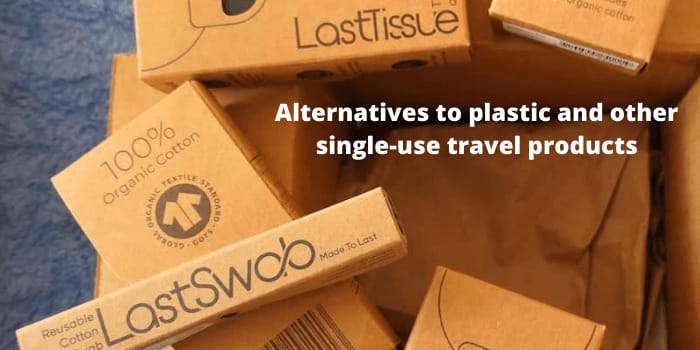
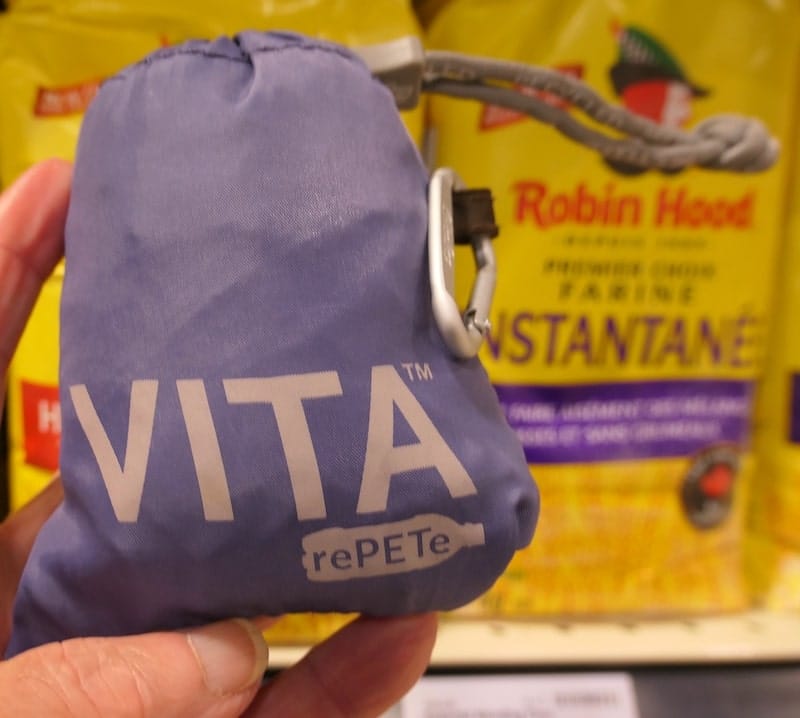
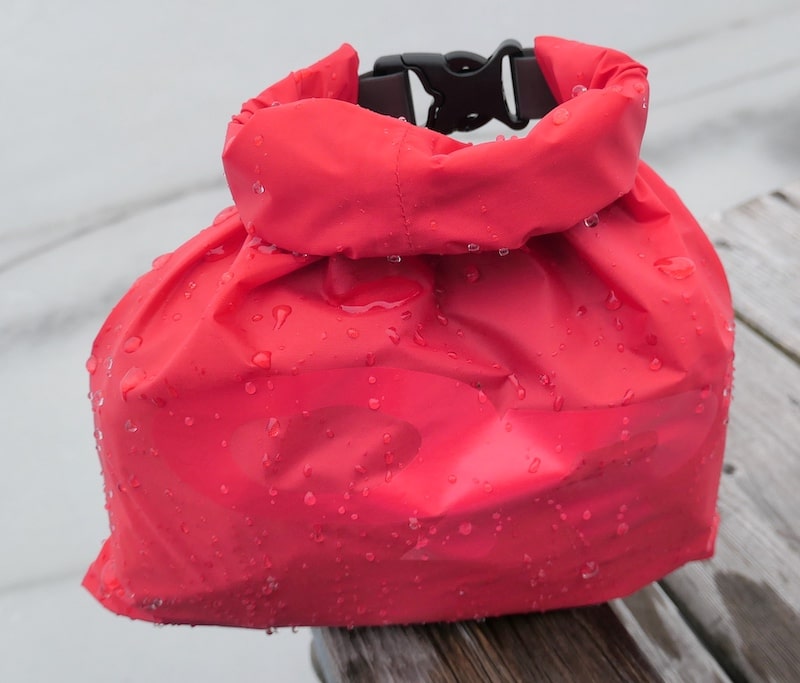
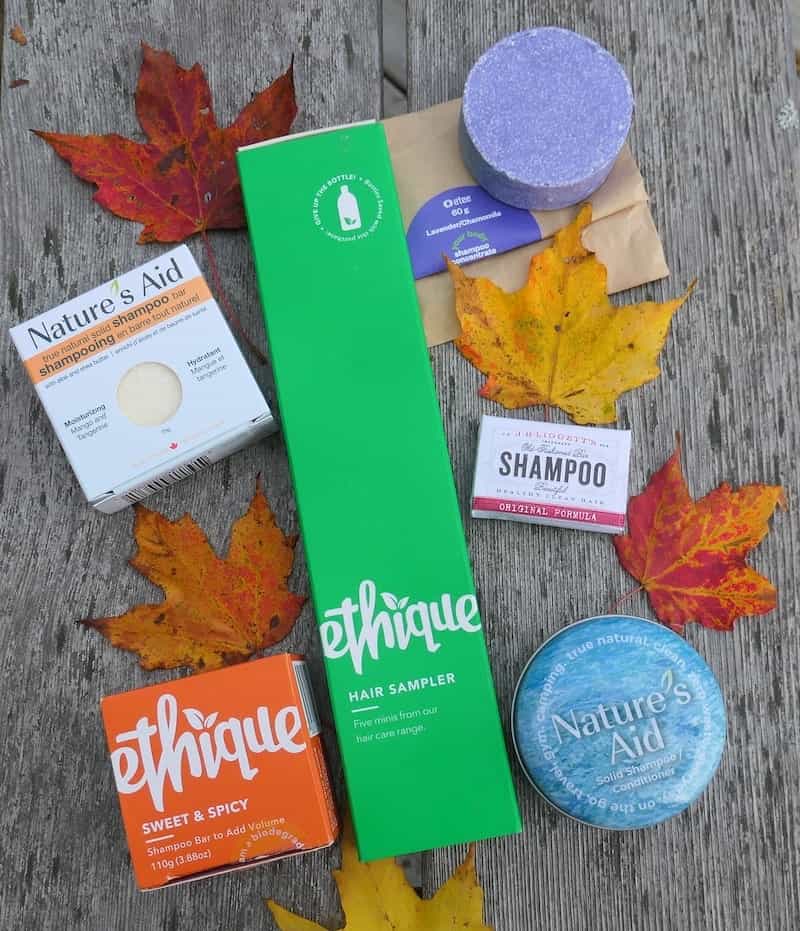
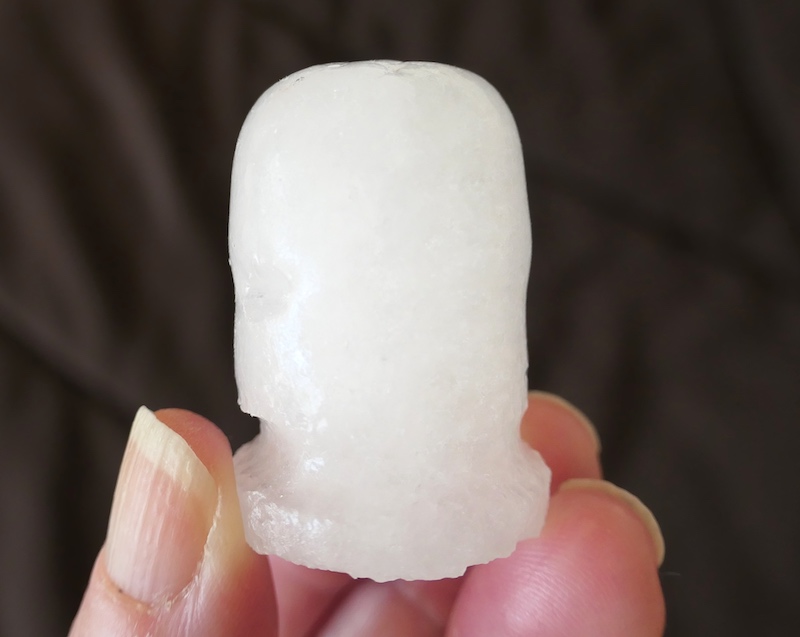
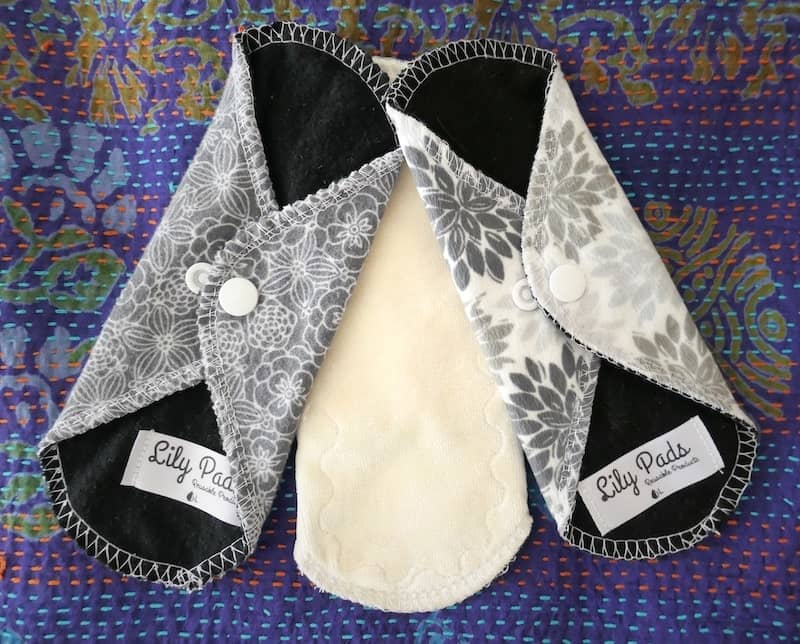
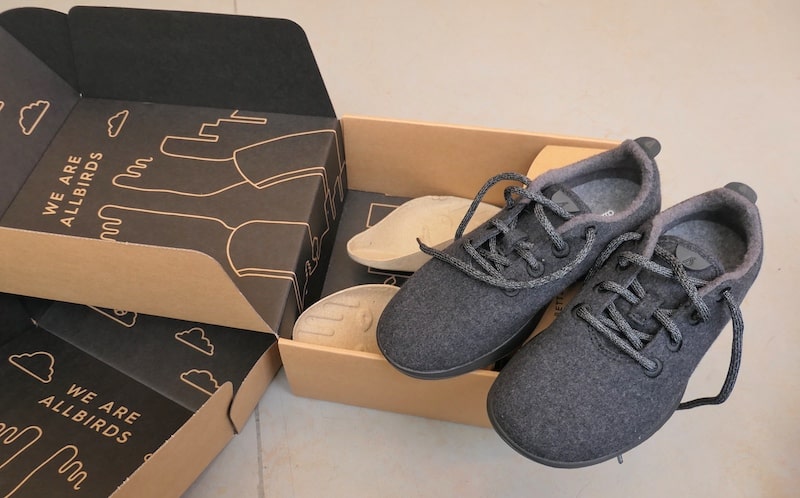
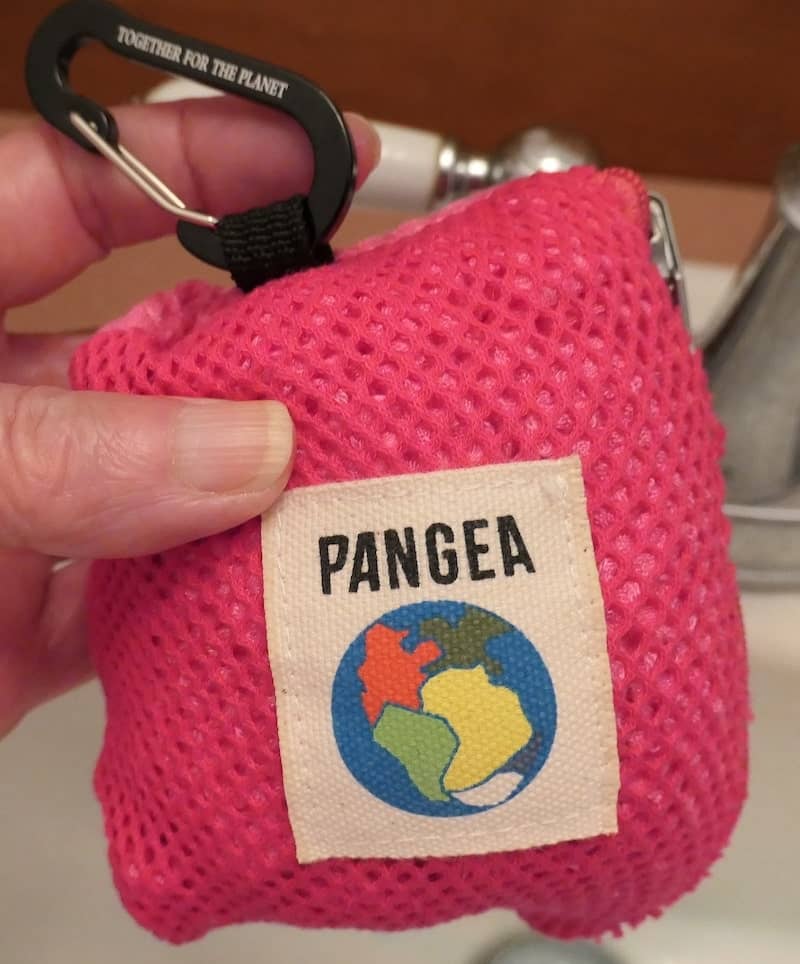
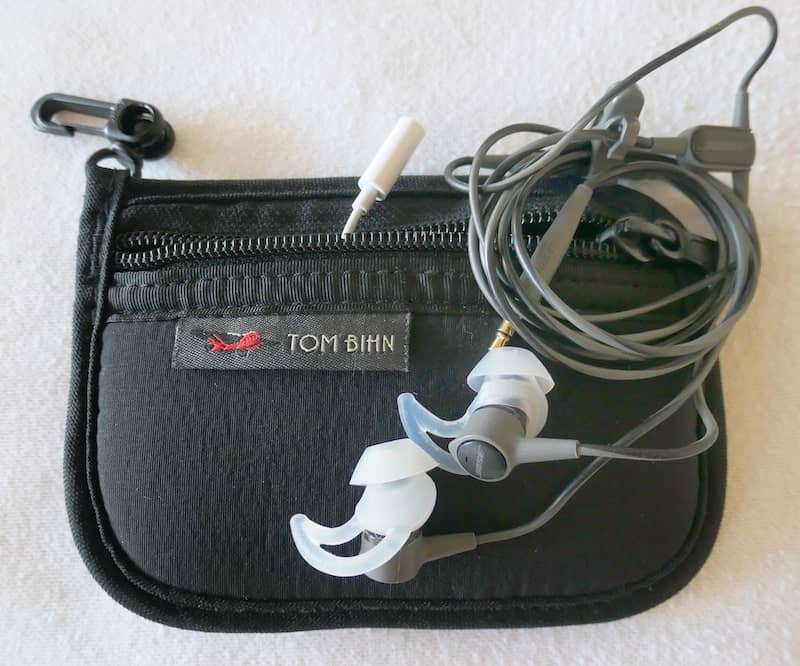
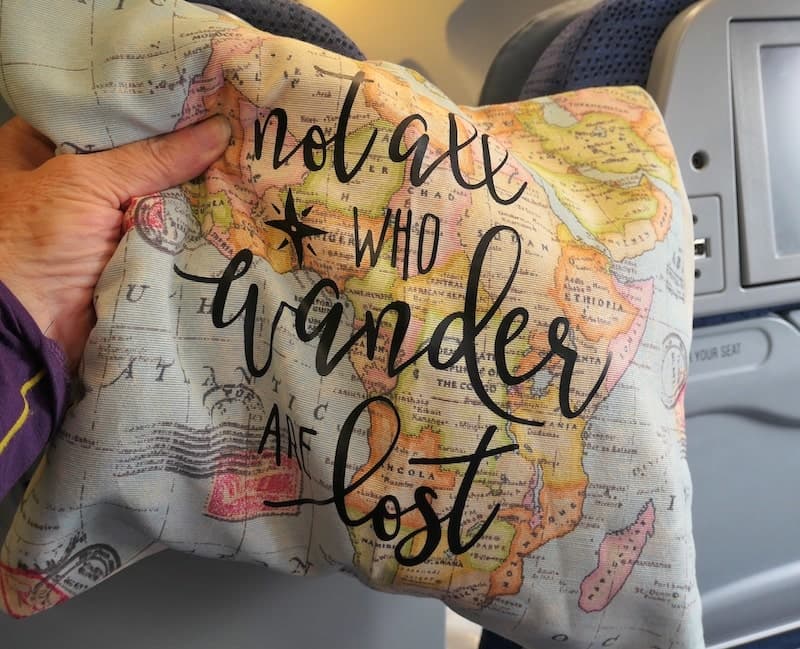
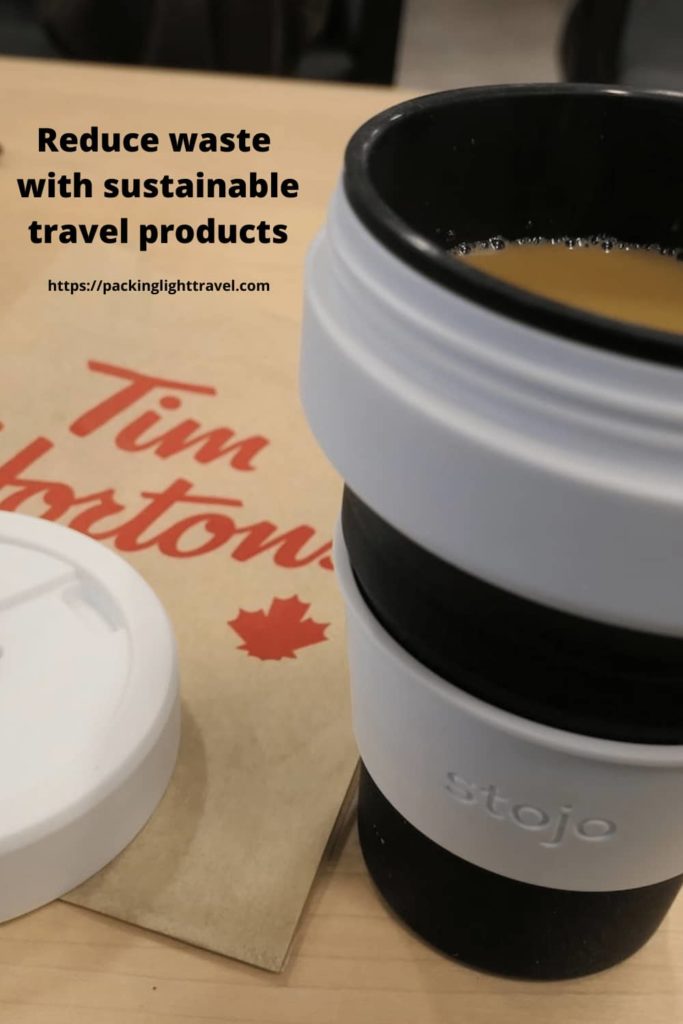




Great eco-friendly product reviews. reusable eating utensils are a must for travel and work and dry bags keep important items dry without going through numerous plastic bags.
This may seem like a dumb question, but how do you refill a ballpoint pen?
Hi John. It requires a new cartridge, a separate product. The pen itself doesn’t need to be discarded, just the empty cartridge. Here’s a link to a short YouTube video showing how it works: https://www.youtube.com/watch?v=cD6BYFy-9dQ
At least I was right about it being a dumb question!
No worries, John. Your question sent me to YouTube in search of a quick explanation in case someone else had a similar thought. Thanks for dropping by and reading the blog. All the best.
Very informative and thorough post.
Thanks for sharing Anne.
I love this post! There are things in this list that I do now (thanks to advice from my friend Anne), but there are so many more considerations (like a reusable straw), that I hadn’t thought of. I will be visiting this post again before I pack for my upcoming winter/spring trip. Thanks Anne! This is my favourite post so far!
EXCELLENT!! I’m pleased you found it useful. Thank you, Terri-Lee for such a positive comment.
Very thoughtful post. But i have a question that how can we refill a ball point?
The refill cartridge is a separate product.
Hi Anne,
For 15. Soap, shampoo, and conditioner bars
the link to Dr. Bronner’s 18 in one Hemp Castille Soap doesn’t work.
Otherwise, great article!
Thanks, Angela. Thank you for pointing that out. Happy you appreciated the article.